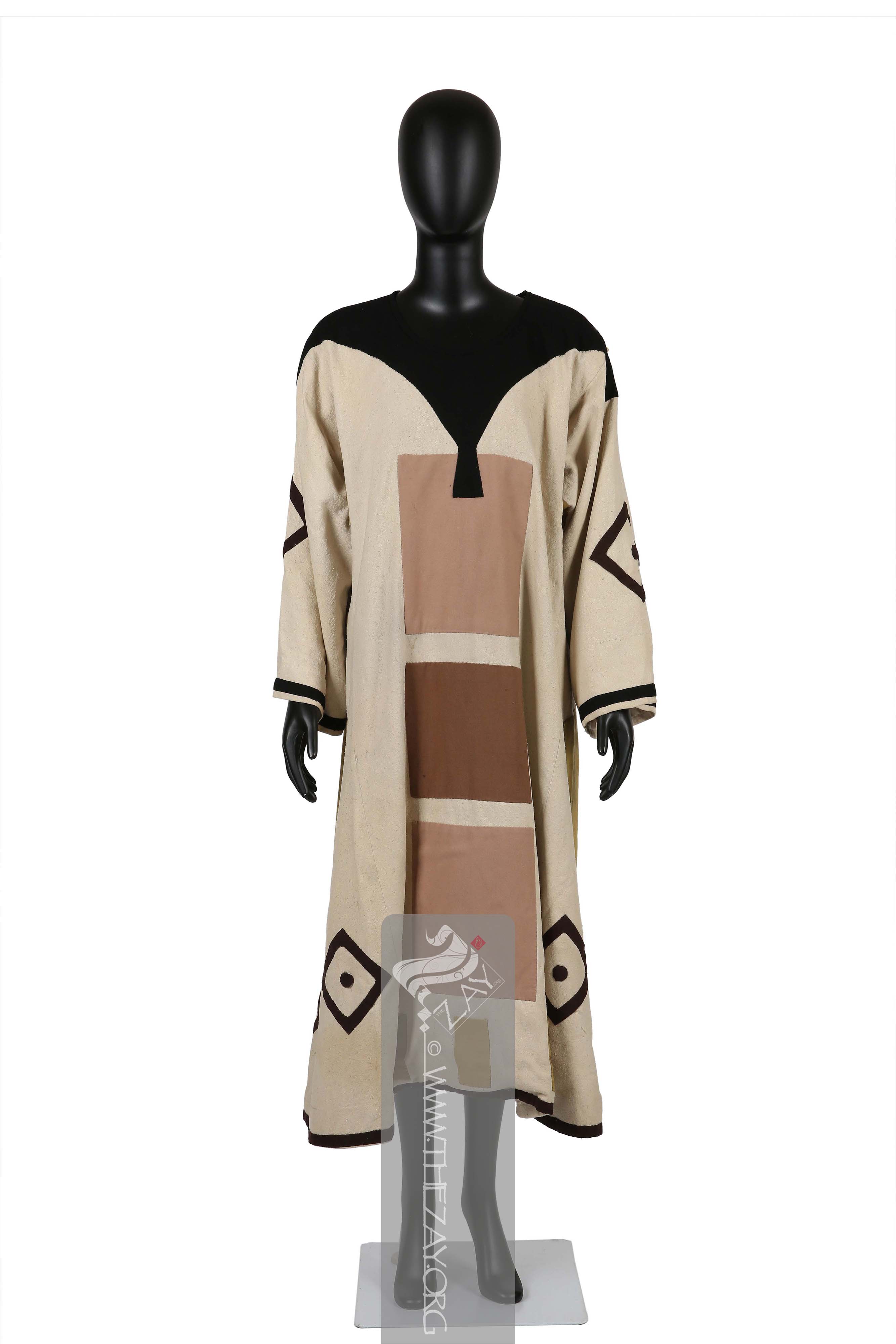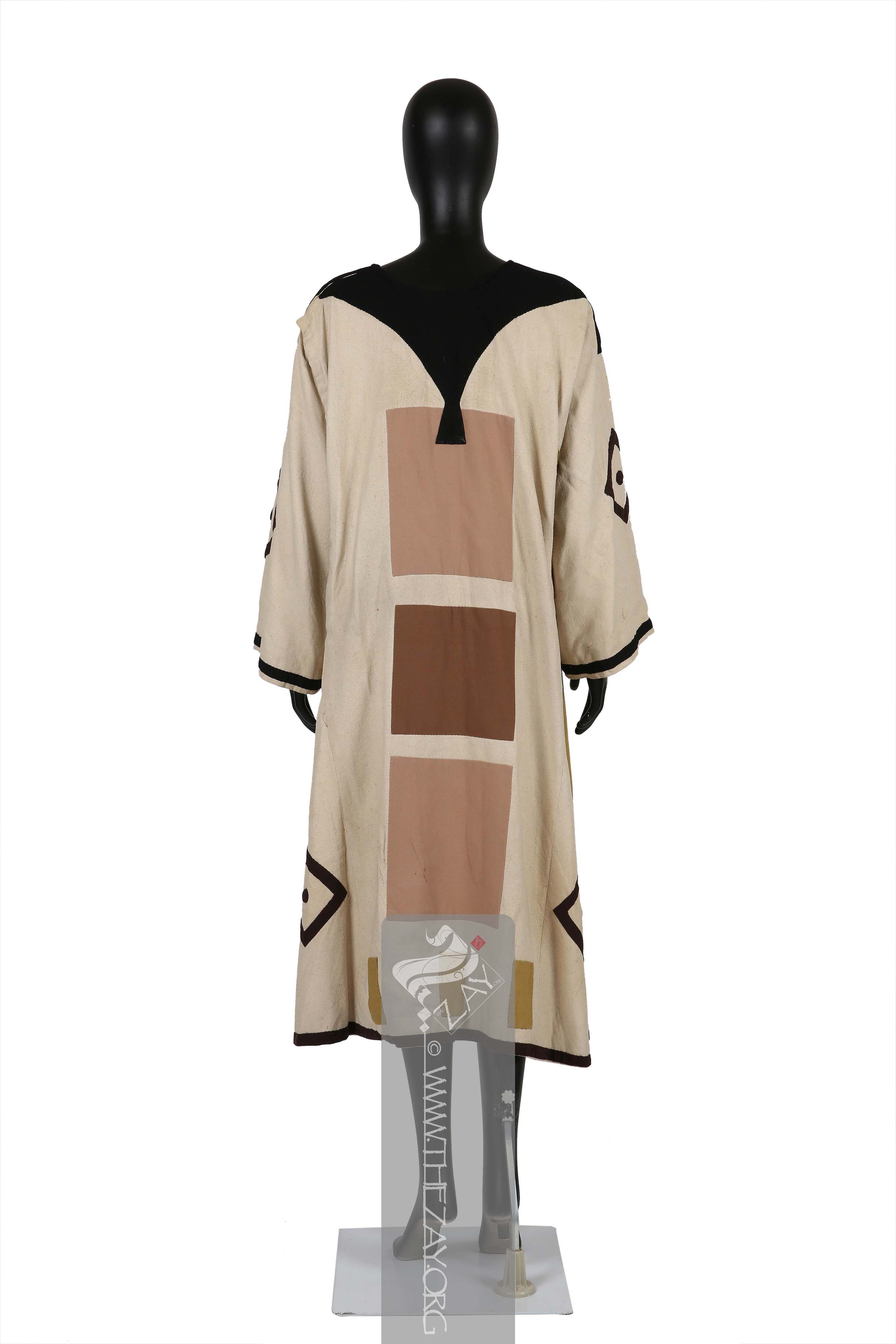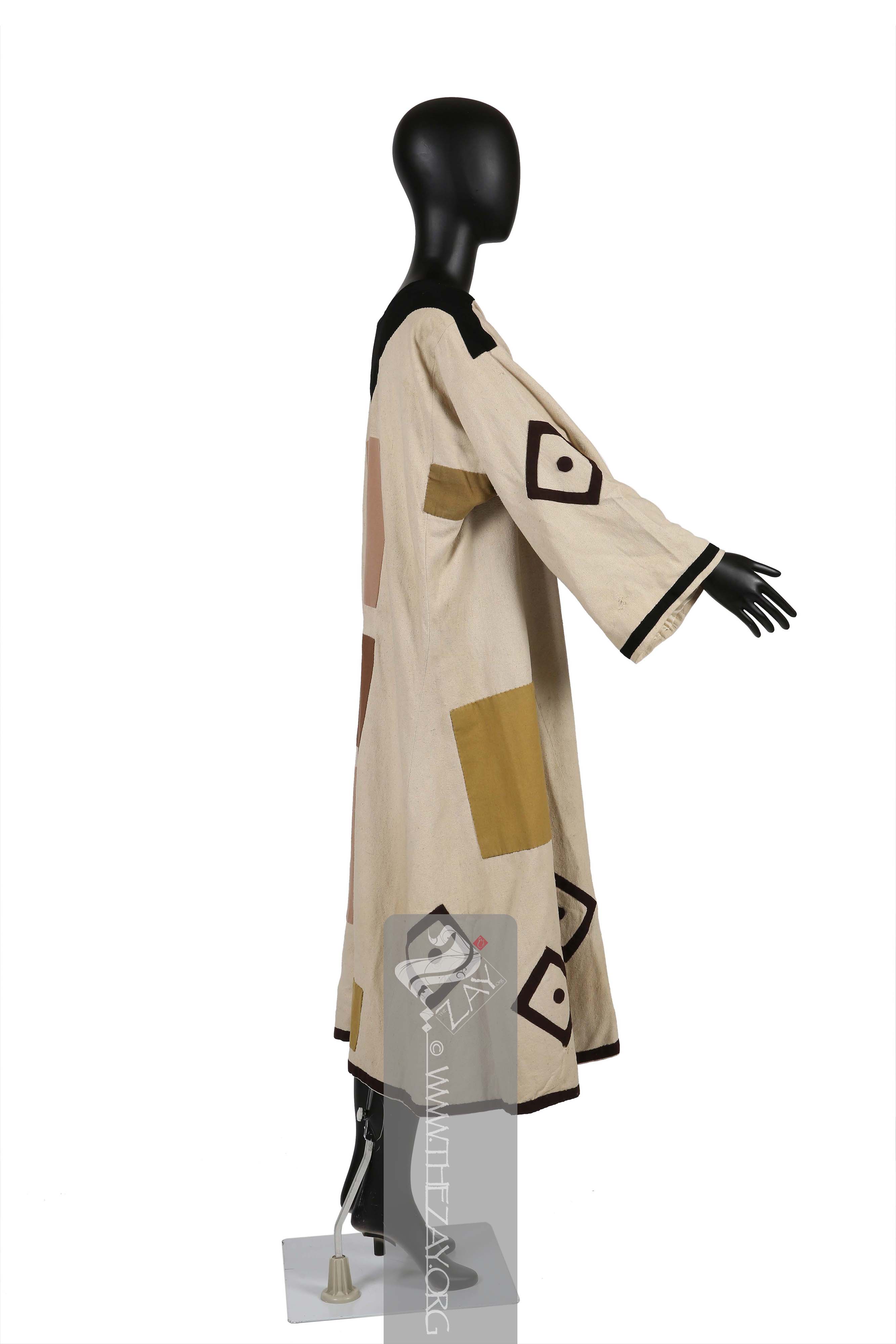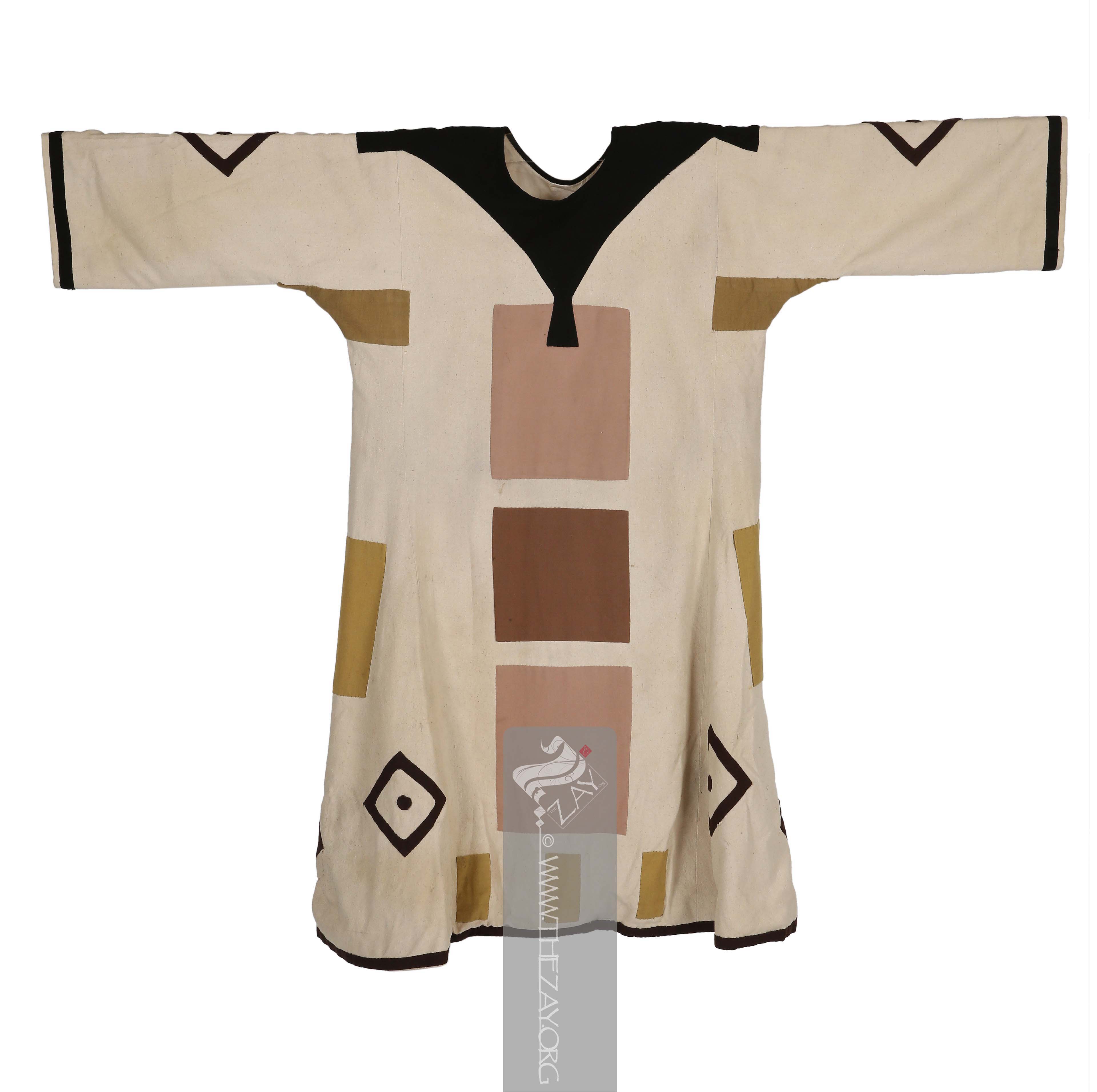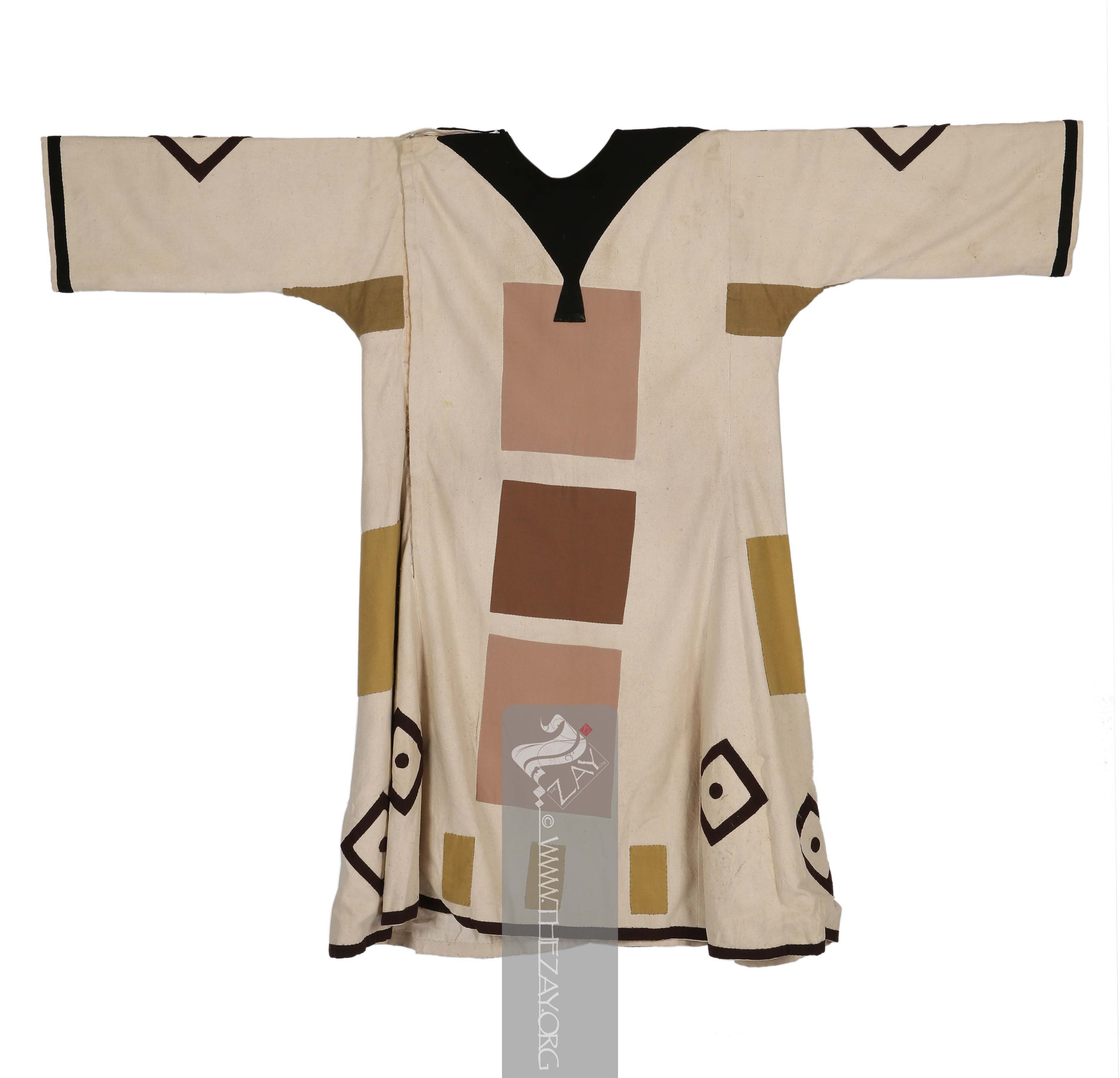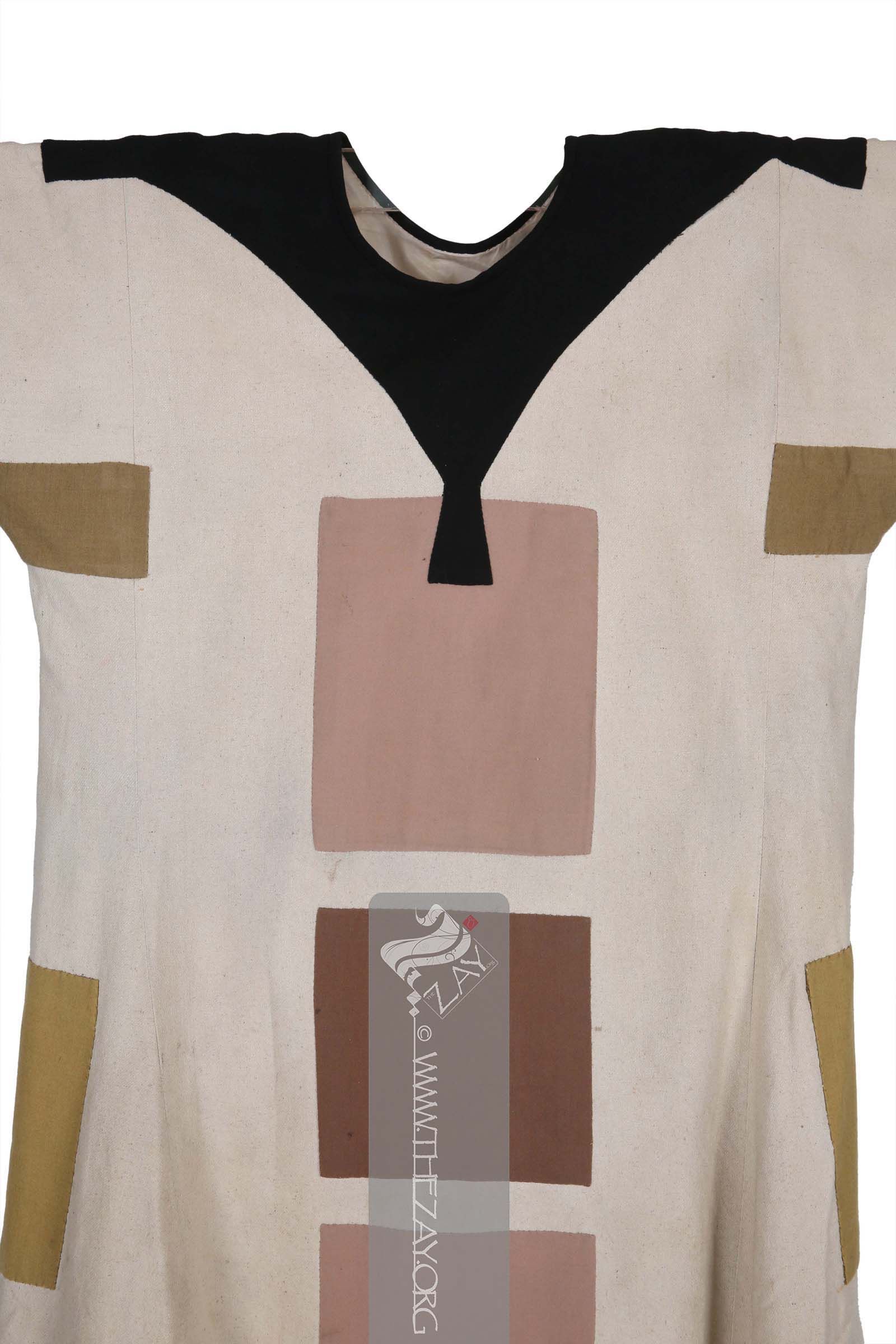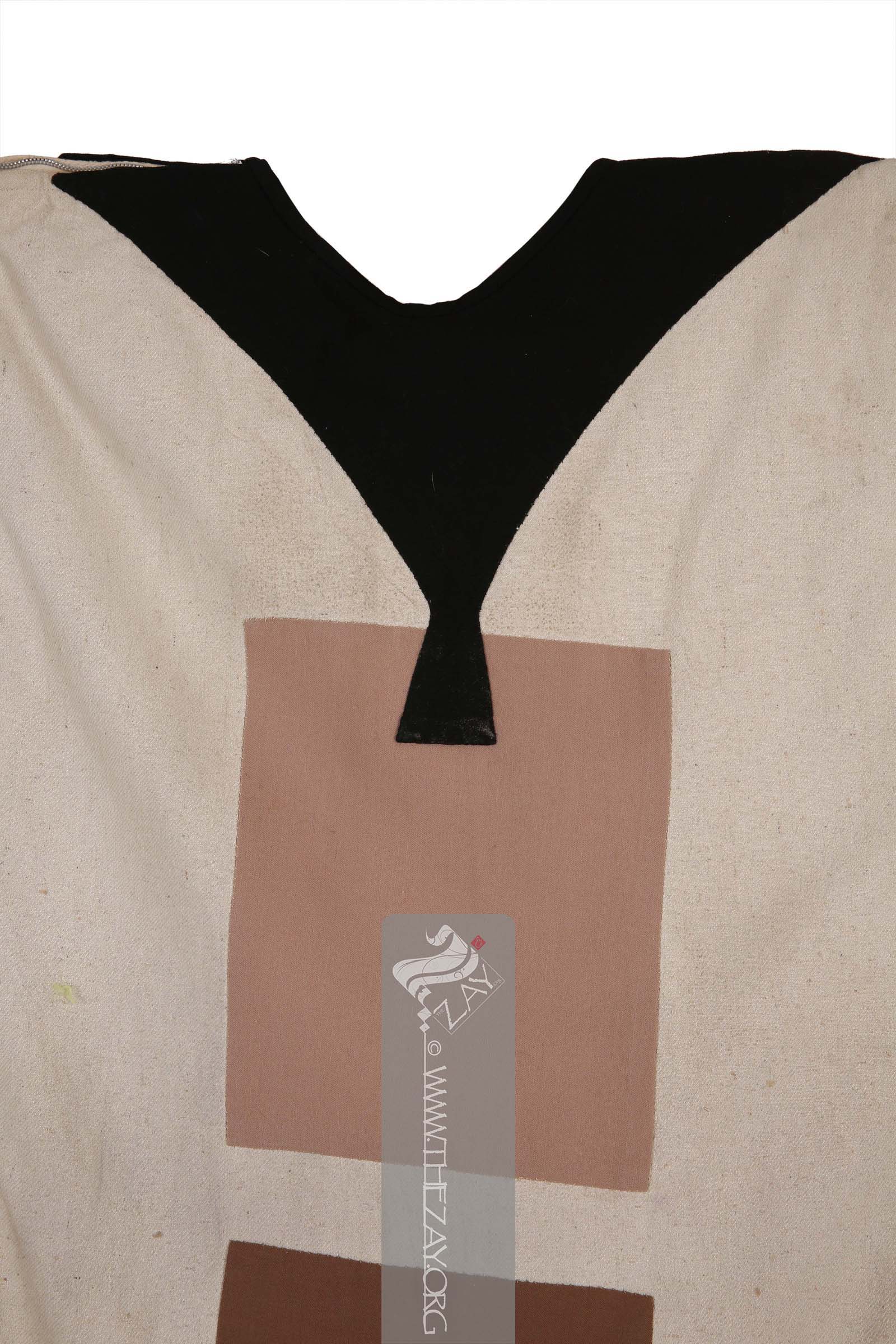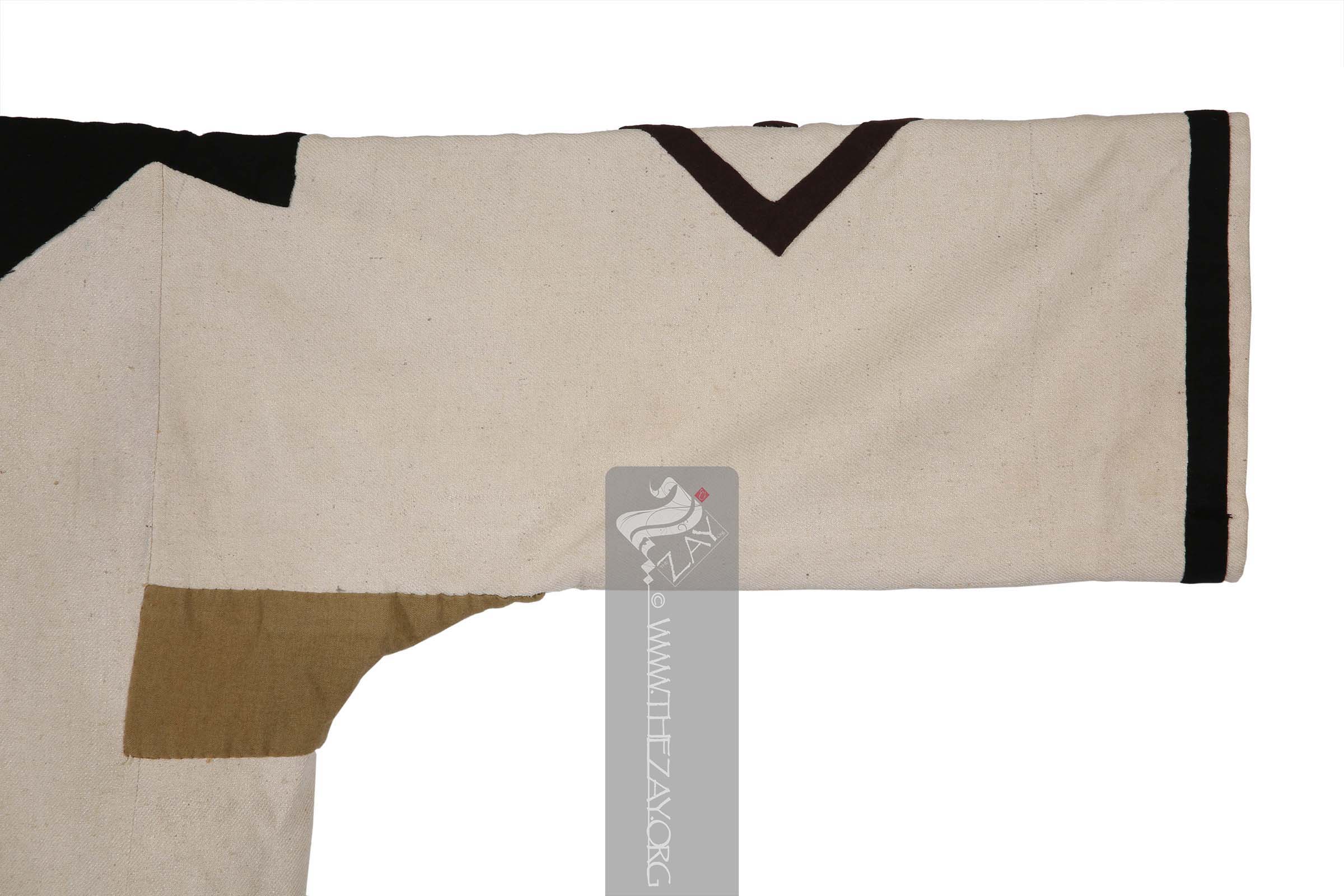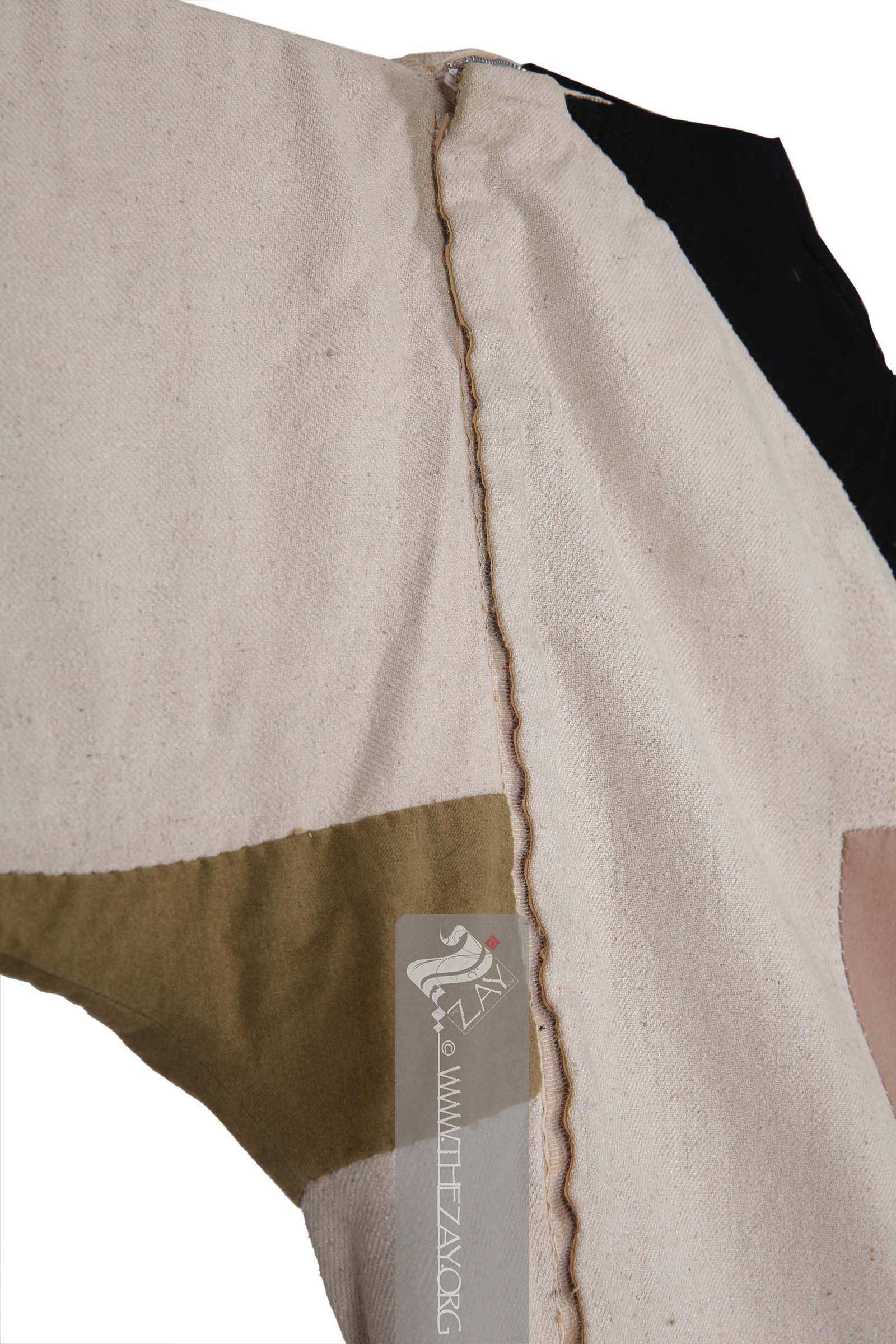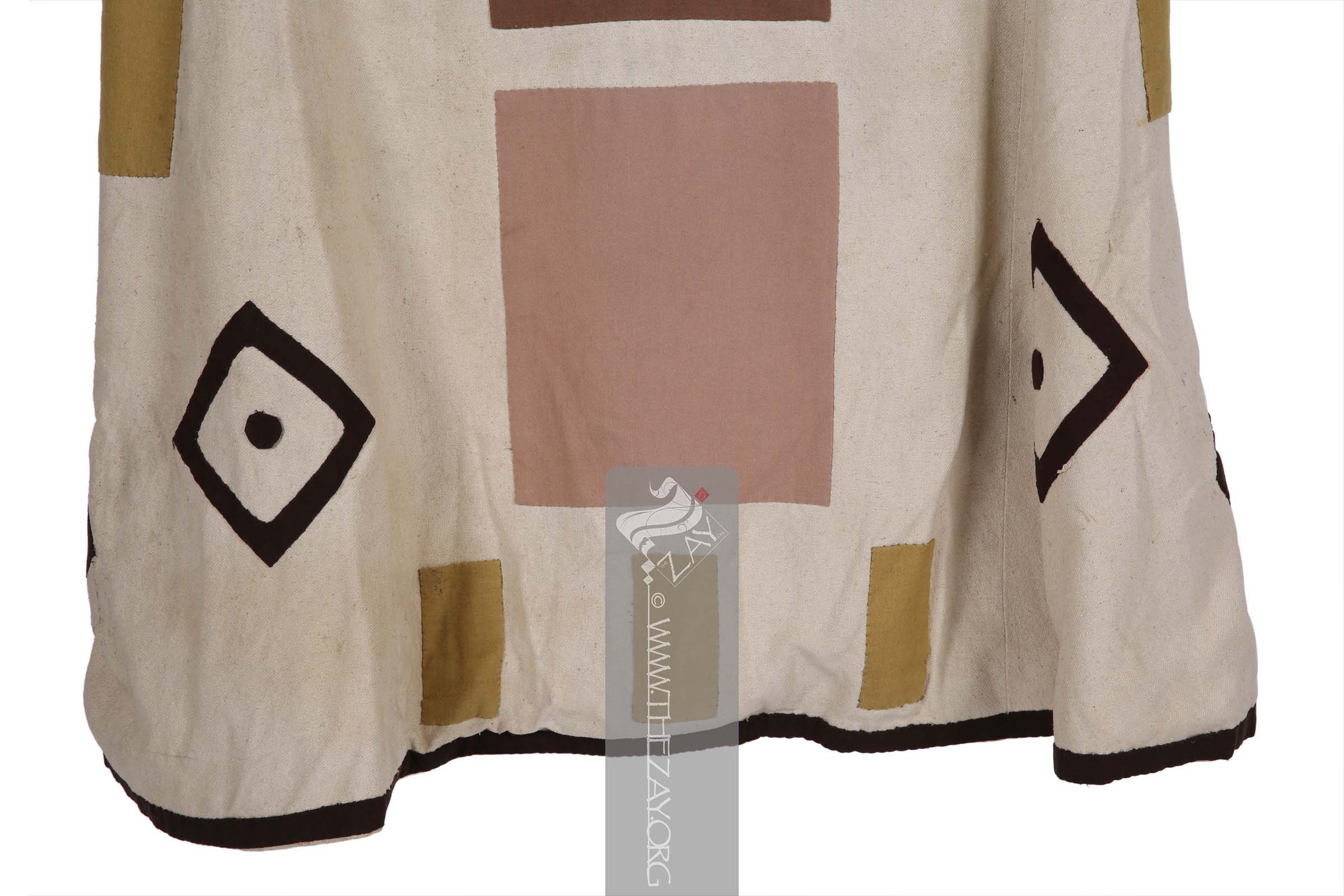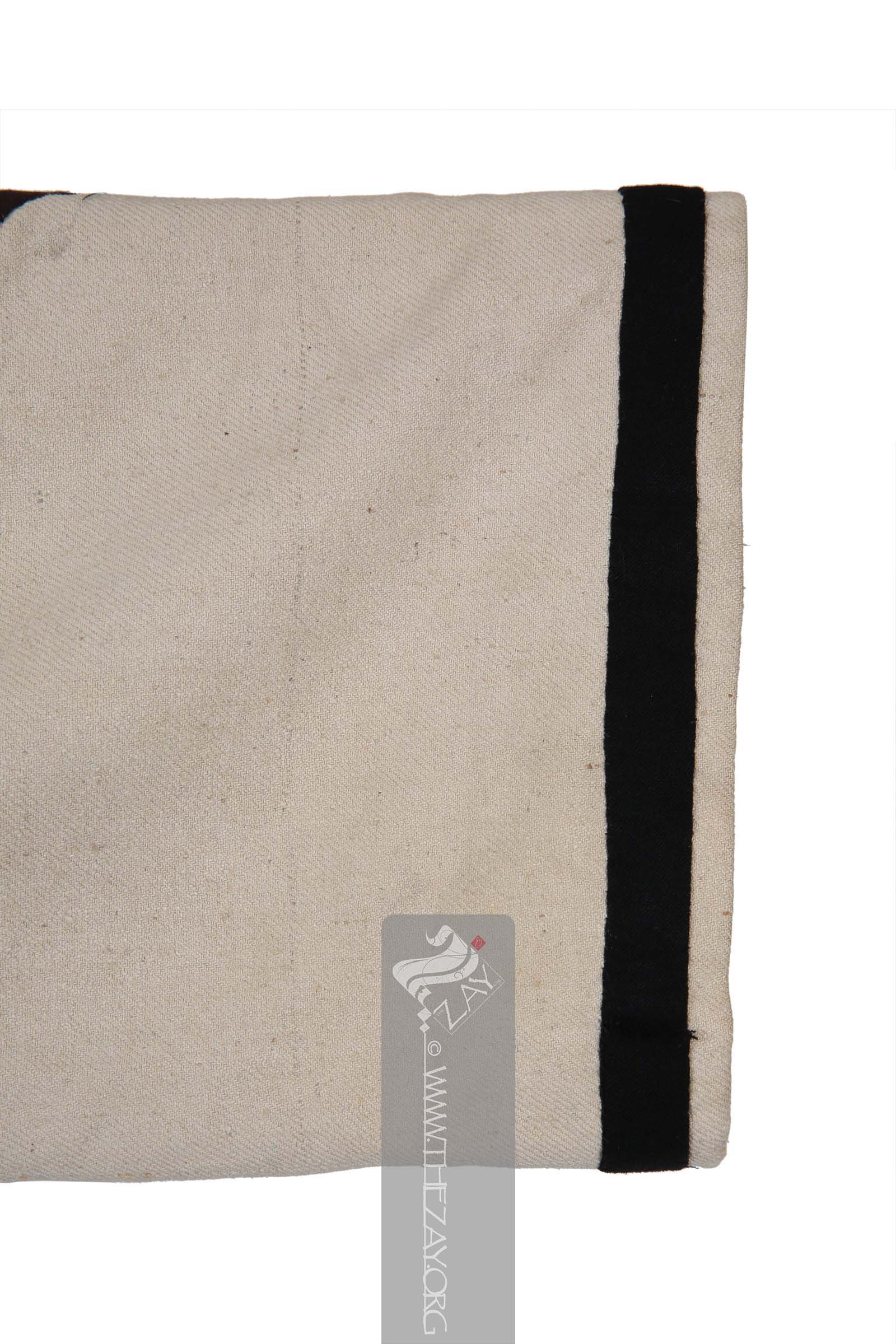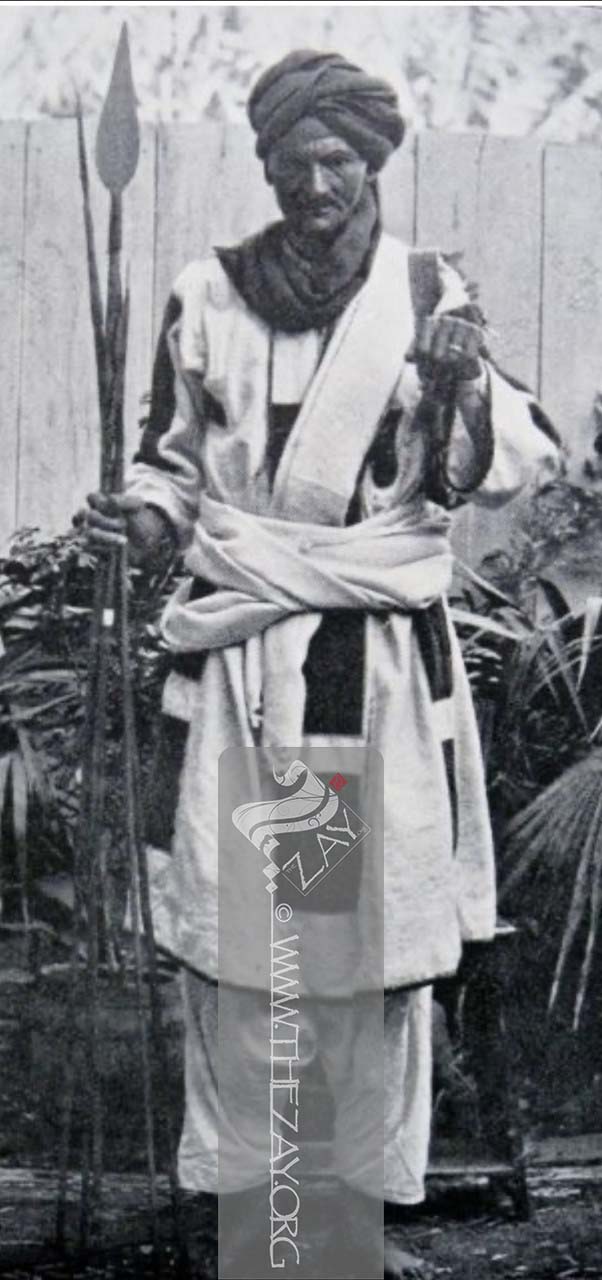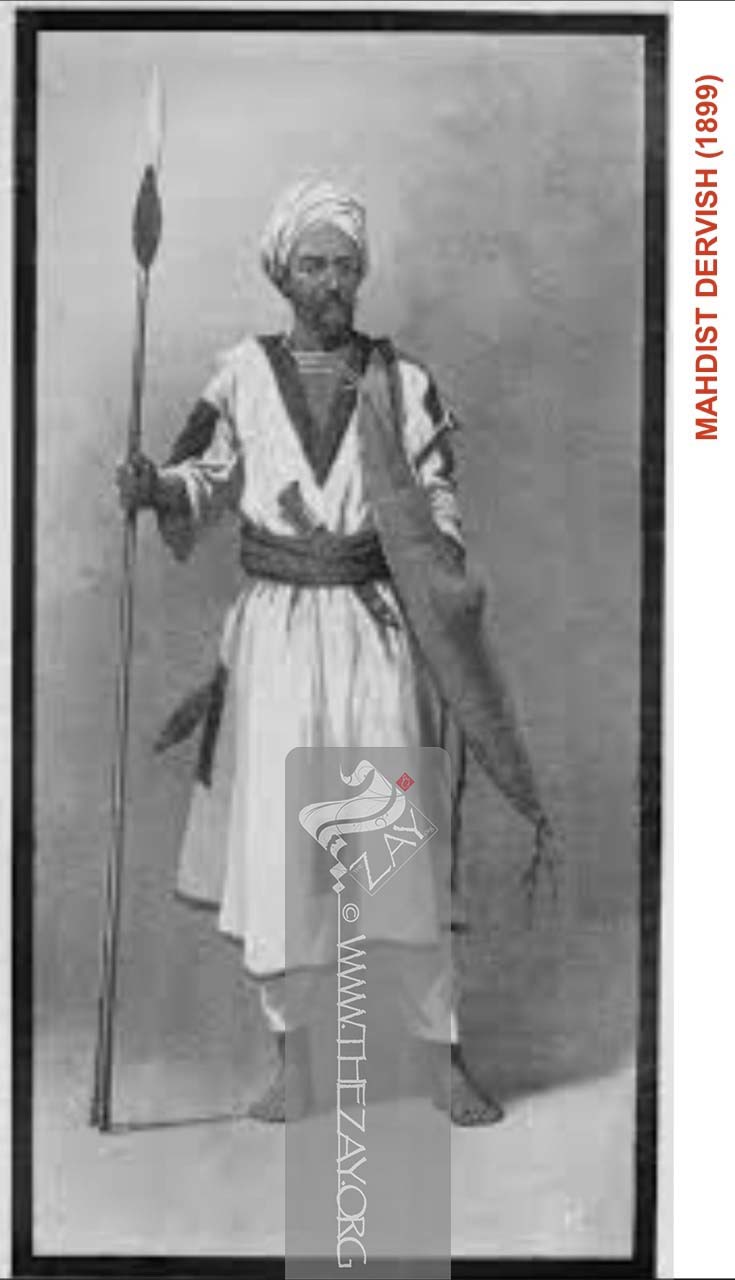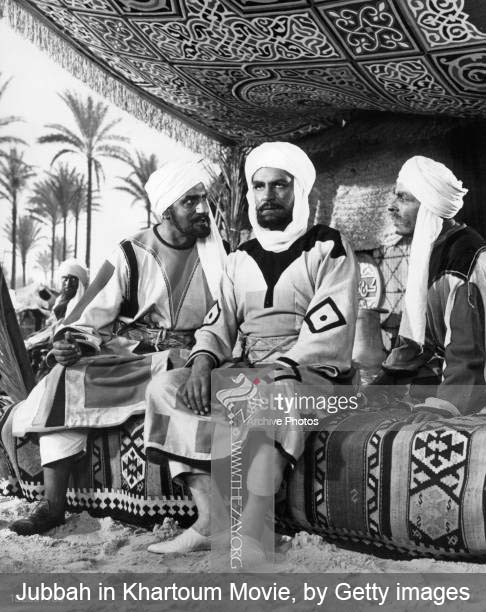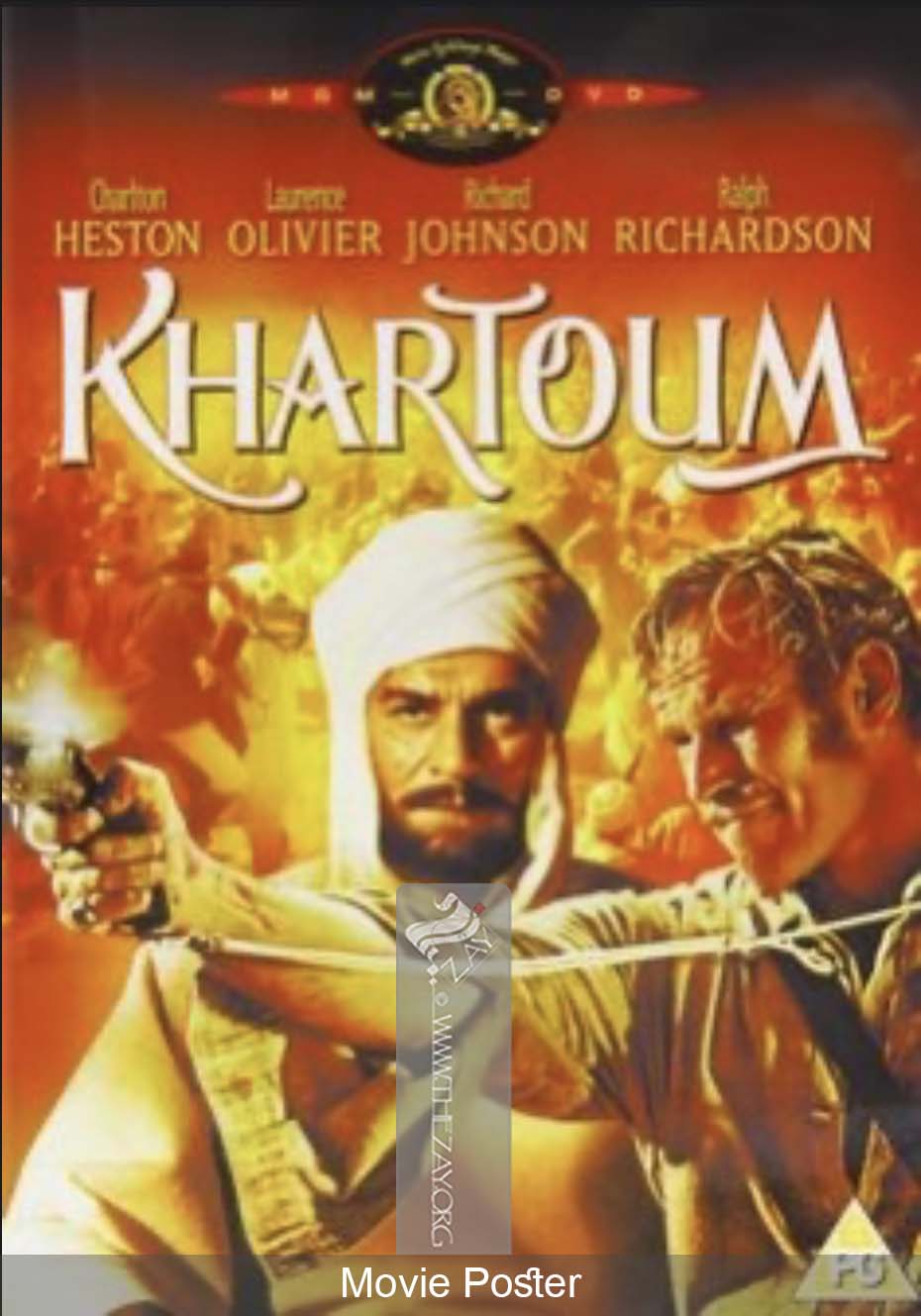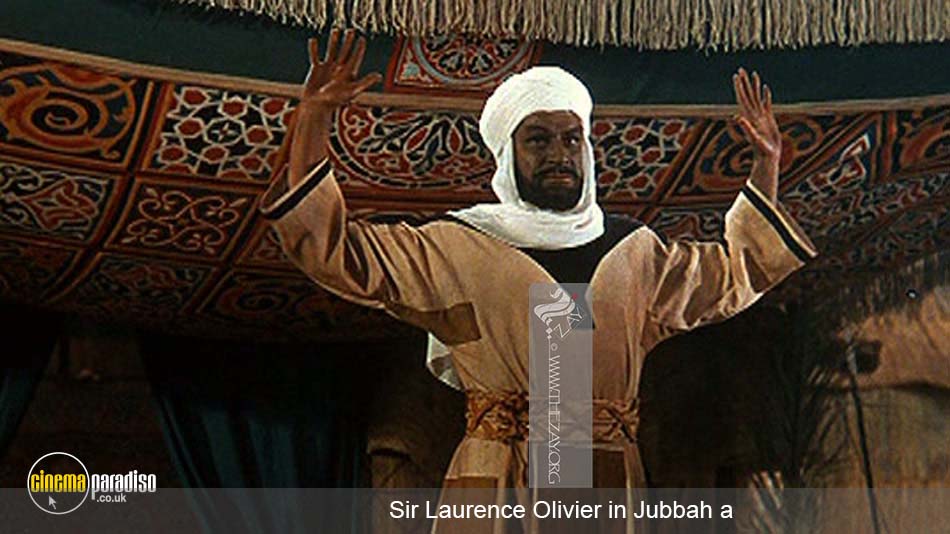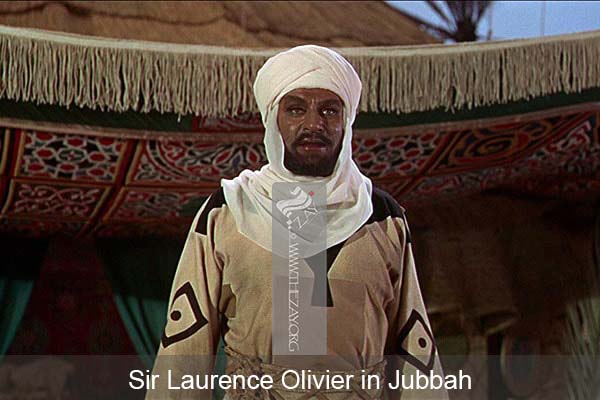Object noteThis (jubbah) bears the manufacturer's tag “L&H Nathan, 143 Drury Lane” and underneath features the hand-written name of 'Sir Laurence Olivier'.
Object History This item was purchased at auction from collector William Emmett, who had bought a collection of clothing belonging to Laurence Olivier and Vivienne Leigh from the daughter of their private secretary.
This specific tunic jubbah featured heavily in the 1966 film 'Khartoum' featuring Olivier as Sudanese leader Muhammad Ahmed and Charlton Heston as the British colonial governor, General Gordon. The film is based on historical accounts of the Siege of Khartoum (1884-1885) by the Muslim Mahdi army, its defence by Gordon and his ultimate defeat.
The jubbah was part of the Mahdi army’s uniform, although the size and style of the tunics varied depending on the wearer’s region and rank. The origin of the jubbah’s patchwork design lies in the initial followers of the Mahdi, a group of religious, poor farmers called the darawish, whose name formed the basis of what became the English term for all followers of Muhammad Ahmed.
The darawish wore ragged cotton tunics which they repaired with woollen patches. These patches also served as a reminder of the group’s humble origins. It wasn’t until after the fall of Khartoum in 1885 that wool started to be used less for its practicality, and more as a means of realising increasingly original and striking jubbah designs. This replica is therefore more typical of later designs of this type of tunic.
The costume was created by the film’s costume designer Bill Carman and manufactured by L&H Nathan of London, who made bespoke outfits for many British theatre and movie productions.
Object Features The reproduction jubbah was machine sewn from coarse cotton fabric, and the coloured pieces were manually added. At each elbow there is a dark brown diamond shape with a small brown dot in the middle, and on each side of the bottom of the jubbah are three similar diamond shapes. A black boarder surrounds the bottom and the end of the sleeves.
Around the circular neckline, black cotton fabric is sewn from outside the shoulders extending inwards down to the middle of the body in a V-shape ending with a small triangle on top of a large pinky-beige patch. Below this are two similarly sized patches, the middle one brown, and the bottom patch the same pinky-beige. Three rectangular patches of olive green are sewn directly beneath, and the same olive colour is used to form large patches on the sides, as well as under the armpits forming a gusset. The design is mirrored on the back of the jubbah. The reproduction jubbah has a metallic zipper and a velcro strap on the left shoulder.
For more information click
Here 



